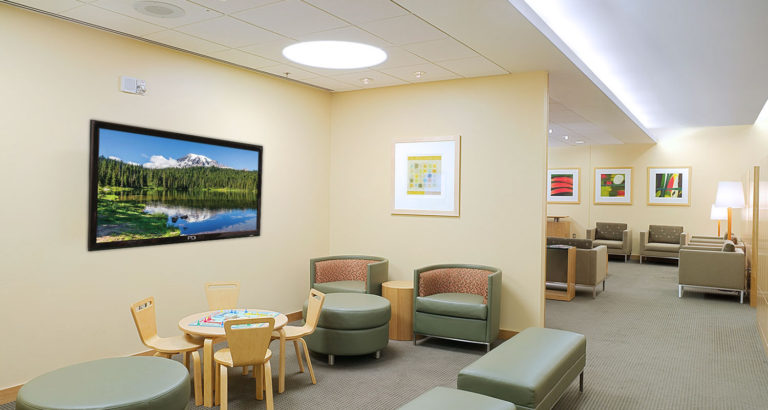How to know what display system to choose for your facility

If you’re looking for cost-effective healthcare video and communication systems, you need to take more things into account than just the price of the system. While it will often be a big factor in your decision, consider the features, form factor and your facility’s other requirements. To help you in your selection process, we’ll look at three brands, PDi, LG, and Samsung; that are commonly purchased in facilities around the country and identify their major differences and similarities within these categories.
Price
While a top priority should be if the healthcare video and communication system meets the requirements of the facility, patient or the end user, price will also likely be a deciding factor. Most people are familiar with LG and Samsung consumer brand displays; however, the healthcare-grade commercial “televisions” tend to carry a necessary premium over consumer brands due to functionality and the additional UL listing the display is required to carry to be safe and approved for the environment.
Size
“All manufacturers offer a large form factor healthcare display from 24 to 55 inches, varying depending on the brand,” says Dan. PDi and LG set their brands apart by offering small form factors, such as a 14-, 15- and 19-inch displays that can be placed bed- or chair-side within your facility. Currently, both PDi and LG offer 55” healthcare displays while larger non-healthcare displays are available from both LG and Samsung.
Features
PDi large form factor displays allow a DVD module to be installed on the backside of the display. Dan points out, “The DVD module device is very useful for entertainment, educational training for patients, family and staff.” PDi displays also have the ability to allow the patient to control a remotely installed cable box or a satellite receiver from the display interface. “This provides the patient with more variety of channels,” explains Dan.
RF systems are typically modulated to allow a certain number of channels, often ranging from 24 to 48 channels. “This feature from PDi provides control over the receiver, which means you can access multiple channels on one receiver instead of a fixed number on the system, producing a larger variety of channels and programming,” adds Dan. This gives you more bang for your buck, as more content becomes available with less equipment necessary.
Samsung, LG and PDi all have the ability to use a patient engagement system. However, each manufacturer’s platform varies between IP and RF solutions, which is why it is important to fully understand the existing facility infrastructure before making a brand decision.
Requirements
One of the most major things that you’ll need to consider is where you’ll need healthcare-grade displays and where your facility does not. Many do not realize that healthcare accreditation organizations such as the Joint Commission and Centers for Medicare & Medicaid Services (CMS) require adherence to the UL standards required by the NFPA 99 Health Care Facilities Code. This standard requires electronic devices in a “patient care area” to be UL-listed for healthcare use. It used to be that only hospitals required this but recently CMS also began enforcing this NFPA 99 in nursing homes, ambulatory surgical centers and related facilities.
Waiting or common areas could easily house a Samsung or LG display, whereas patient rooms will require healthcare-grade displays, where all three brands are a great choice, pending the correct functionality and use case required.
Our experts regularly offer helpful advice and tips — don’t miss out on worthwhile best practices and industry insights. Discover more on our blog.
